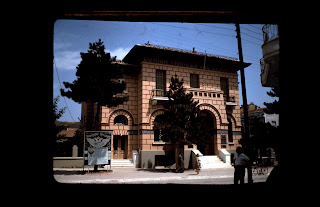About Saint Nicolaos, or Santa
Nicholas was born in Patara, Asia Minor, in the 3rd century. It was the beginning of the Byzantine Empire, the first nation / empire that adopted Christianity. The Empire was destroyed by the Turks in 1453 AD. It had been weakened by constant raids from various groups of peoples. Ironically, the biggest blow to the Empire came from the Christian West and was delivered by the Crusades.
The language of the Empire was Greek, its capital was Constantinople (Istambul, today) and the empire centered on Asia Minor which today is called Turkey. Contrary to popular belief, Turkey is not 99 % Muslim, but has about 35-40 % crypto-Christians (these are people who were Christians, but under Turkish law the practice of Christianity is punishable with death, something that USA, Turkey’s faithful ally, is desperately trying to hide).
St. Nicholas’s parents were wealthy, but died young during epidemics. They raised Nicholas to be a devout Christian, so he gave the money he inherited to the poor, the needy, the sick and the suffering. He was made a bishop of Myra, a nearby town, when he was a young man. He became known for his generosity, his love for children and his concern for sailors and ships. Patara /Myra were on the principal boat route between the Aegean and the East. He used to give presents to the sailors for their children that undoubtedly would miss their fathers during the long journeys. Under the Roman Emperor Diocletian he was exiled and imprisoned. When he was released, he attended the Council of Nicaea in AD 325. He died December 6, AD 343 in Myra. He was buried in his cathedral church, where a unique relic, called manna formed in his grave. This liquid substance said to have healing powers, fostered the devotion to Nicholas. The anniversary of his death became a day of celebration, St. Nicholas Day and is a major celebration in Greece today. It is also celebrated at Myra today, but unfortunately, the Turks will not allow the roof of the church to be completed, so the liturgy takes place in the open ! (yes, you guessed it, the US, supposedly a Christian nation is in complete agreement with that as well !).
St. Nicholas story was picked up by the Crusaders along with countless others, such as those of Saints George (who became the patron saint of England), Andrew (of Scotland), St. Barbara, St. Gregory, etc.
Through the centuries many stories and legends of his life and deeds passed around Europe. These help us to understand his extraordinary character and why he is so beloved and revered as protector and helper of those in need. The story of the Three Impoverished Maidens or the Story of the Dowries is one of the most popular:
A poor man had 3 daughters. In those days a father had to offer prospective husbands something of value. The larger the dowry, the better the chance a young woman would find a good husband. Without that a woman was unlikely to marry and probably would be sold into slavery. Mysteriously, a bag of gold appeared in their home at the right time for each of the daughters. It was tossed through an open window and said that it landed in stockings or shoes left before the fire to dry. (It was the bishop who threw the gold secretly during the night) This led to the custom of children hanging stockings or putting out shoes eagerly awaiting gifts from St. Nicholas.
Unlike Europe and North America where children are waiting for St. Nicholas to deliver presents to them, the custom is different in St. Nicholas’s home country (Greece) where another Saint, St. Basilios, is delivering presents to children, not on Christmas Day, but on New Years’ Day.

























